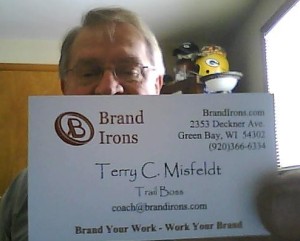Perception vs. reality in marketing your brand.
With as many blogs as we’ve posted about marketing, it’s puzzling why this is the first time we’ve addressed the topic so basic to marketing. Does the consumer’s perception of your business match the reality of your company?
Here’s a little test: Imagine your dream vehicle, the car or truck you’ve always wanted to own and drive. With that image firmly in mind, see if the picture at the end of this blog matches your ideal. Does perception match?
You’ve probably heard the phrase: Marketing is perception. There’s an element of truth to that because every company and business wants to have top-of-mind awareness for their products and services with the largest consumer base they can capture.
An analogy would be that Cadillac is the top-of-the-line in American automobiles, the “Cadillac” if you will. Keep in mind it has taken years, lots of advertising dollars, and various trials and tribulations to achieve and maintain that image for General Motors.
You, too, must have that commitment to your brand to ensure its position as the leader among your competitors.
It’s a marketing process wherein you craft the ideal, then work toward matching reality to that perceived image. Once it’s achieved, the focus shifts to maintaining a sustainable corporate brand identity.
One of the first steps is to assess what perception already exists for your products or brand. You can engage professional services to perform this analysis or do it yourself with the pain-staking effort of talking to customers and non-customers. Customers can tell you what they like about your products and services and your company overall. Non-customers can give you the perspective of individuals who a) may not be aware of your products yet, or b) have an adverse opinion of what your products or services entail. Either way, you need to know the perception.
Another step, and again, professionals can assist with the process, is to determine how closely the perceptions are to where you want them to be. Coupled with that is delineating the steps to bring the two more closely into alignment.
Changing perceptions is difficult. Consumers generally remain loyal to certain products and services, hence brands, they know, like, and trust. Getting them to change to something else is a challenge, as much as it is to convert customers of a competitor to your brand.
Brand Your Work – Work Your Brand







